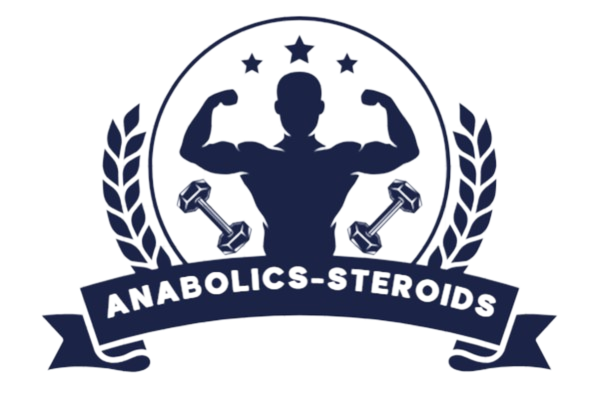Chapters:
00:00 Intro
00:12 Muscle damage vs Muscle growth
02:24 Soreness vs Muscle damage
04:53 Muscle soreness vs Recovery status
06:44 Conclusion
Transcript:
What does it mean if you’re sore after a workout? Can you train through the soreness? Does it mean you had a good workout? What does it mean if you’re never sore? Most people’s first intuition is that soreness is related to muscle damage and that muscle damage is related to muscle growth. Surely you worked hard, now you’re in pain, you must be growing, right? Wrong! On both counts. Life isn’t fair. Hard work does not always pay off. And being sore does not mean you had a good workout. Even if we assume that soreness represents muscle damage, research very clearly shows that muscle damage is not required for muscle growth and muscle damage does not correlate with muscle growth or with strength development.
Moreover, we have direct research showing that people that respond better to training, high responders, do not get more sore than low responders. There is market individual variation in how sore people get and how much muscle people can build, but the two do not seem to be related. Anecdotally, you can see this not just between individuals, but also between body parts within an individual. My best body parts, for example, are arguably my delts and my glues, and I almost never get sore in either body part because I never drop the soap. Research on protein balance shows us why muscle damage and muscle growth are unrelated. Muscle damage primarily increases protein breakdown, not protein synthesis. It increases protein synthesis only to the extent to replace the broken down proteins. So having more muscle damage increases total protein turnover, but not net synthesis. So good program design actually minimizes the amount of muscle damage that we experience relative to the stimulus for muscle growth. One example that I’ve talked about in previous videos is training to failure.
Research shows that training to failure, like complete muscular failure, induces a disproportionate amount of muscle damage and causes a disproportionate amount of extra recovery time relative to the amount of extra muscle that you build. You build only a little bit more muscle when you take a set to complete failure vs stopping, say, one rep short of failure, but it does extend your recovery time and it reduces your work capacity because you are much more fatigued in the rest of the workout. That is not worth it, so the stimulus to fatigue ratio of training to complete and utter failure for most people is very bad. So soreness is not a sign you had a good workout, but surely it is a sign that your muscles are damaged, right? Again, wrong. If you are sore there was probably some degree of muscle damage. However, the magnitude of soreness and the magnitude of muscle damage don’t correlate well at all. In fact, they don’t significantly correlate at all in multiple studies.
Muscle soreness also doesn’t correlate with a variety of other measures of muscular recovery, in particular simply recovery of strength itself. For example, one study measured the amount of muscle soreness and muscle damage in a group of untrained individuals vs a group of trained weightlifters after a heavy leg day. Surprisingly, the weightlifters actually experienced a little bit more soreness than the untrained individuals, showing that the amount of soreness and the amount of muscle damage don’t correlate well at all and sometimes go in opposite directions. Another study compared endurance training and heavy strength training and they measured the amount of muscle damage and the strength loss that occurred after both workouts. Of course, there was not a lot of strength loss after the endurance training. The endurance training was relatively easy to recover from, at least this type of endurance training in this particular study, and within about a day most strength had returned to baseline, and within two days there was no longer significant strength loss. However, this was actually the period when muscle soreness was at its peak, 24 to 48 hours later, which is typical for muscle soreness. The heavy strength training workout cost considerably more strength loss and far longer lasting strength loss, yet muscle soreness ratings were very similar.
This is a typical theme we see in the literature on muscle soreness. Muscle soreness usually displays the same kind of pattern. You get sore a few hours after the workout, up to a full day after the workout and it lasts 1 to 2 days after, that’s when you get the peak, and then usually about three days after it’s mostly gone. And the degree of muscle damage, the intensity of the workout, all of these things, they don’t actually change the time course of the muscle soreness that much. We also see that certain types of exercise, such as electrically invoked muscle contractions, can cause considerably more muscle damage than conventional strength training, yet they don’t actually make us more sore. Conversely, we have research that high protein intakes can speed up muscular recovery without affecting muscle soreness.
On the other hand, we have research on certain recovery techniques like ice and heat. These typically have significant effects on the amount of pain that we experience, so they reduce muscle soreness, but they don’t actually do anything to speed up the tissue healing process. So they don’t affect markers of muscle damage and muscular performance. Overall, it’s clear that muscle soreness is not a reliable indicator of your recovery status. There are two main reasons for this.
First, soreness is a sensation and it has a very large neural component. You can even have pain in a limb you no longer have. That’s called phantom limb pain. So there’s a distinction between the triggering of the pain receptors and the actual amount of muscle damage. You can even have pain, evidently, in places where there is no muscle damage and muscle damage doesn’t necessarily have to stimulate pain receptors. So the sensation of the pain is more of a neural interpretation of the amount of muscle damage that there is, if it’s even related to muscle damage, rather than a direct representation thereof.
Second, muscle soreness is sometimes not even related to muscle damage at all. Muscle damage can be related to damage in the connective tissues, rather than the muscle. So sometimes it’s not even the muscle tissue that’s triggering the sensation to begin with, it’s the surrounding connective tissues. Anecdotally, perhaps the easiest way you can tell that soreness is not reflective of recovery capacity is that you can often train through soreness, and it doesn’t make it worse. Often it actually gets better. And that’s because of the repeated bout effect. Repeated what?
The repeated bout effect is the name for the phenomenon that after we do a certain type of workout or stimulus we get a lot less sore from it the second time, even if that second time is a long period afterwards. You can experience this for yourself. Whenever you start a new program, you usually get sore just because it’s new. And that’s basically all that muscle soreness really tells you that you did something new. It’s a novel stimulus. I myself, I never really get sore anymore from strength training and that’s in part because I do high frequency training, which has been shown to reduce muscle soreness levels, but it’s also because I’m simply used to the types of workouts. If I do something completely new, I do get sore and I experience this, funny enough, the most when I do snowboarding or surfing. These things always make me very sore, but, of course, I’m not going to gain any muscle from those.
In conclusion: Being sore is a sensation that’s very distinct from muscle damage and especially from muscle growth. Being sore does not mean you had a good workout. It also doesn’t mean you’re not recovered yet. You can train through the soreness and it usually doesn’t make it worse, often actually makes it better. So soreness doesn’t actually have any programing implications for most people. Of course, you want to apply a little bit of common sense. If you’re so sore that after a warm up, you still cannot perform an exercise with a full range of motion, then you’ll probably want to skip it. So the “talk long / didn’t watch” answer to the question: “What does soreness tell us?” is – nuttin’. If you like this type of evidence based fitness content I’d be honored if you like and subscribe.



